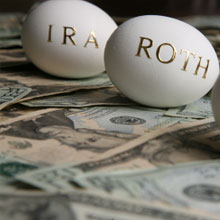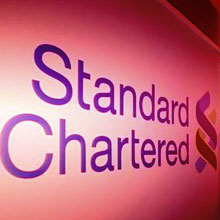By MoneyMorning.com.au
During the week, the Saudi Arabia petroleum and mineral resources minister, Ali Naimi, said he couldn’t understand why oil prices are so high.
‘I think high prices are unjustified today [on] a supply-demand basis. We really don’t understand why the prices are behaving the way they are,’ he told the Financial Times.
According to Naimi, supply of oil is much stronger than when oil prices peaked at $147 per barrel back in 2008. He’s even suggested that if needed, the Saudis could increase output as much as 25%. In order to lower the price.
Currently, the Saudi’s have an extra production capacity of 2.5 million barrels per day (mbpd). This potential is an addition to their 9.9 mbpd output.
Naimi said if his kingdom could reduce oil prices by exporting more, it would.
However, Naimi’s customers aren’t ‘…asking for additional crude. “We are ready and willing to put more oil on the market, but you need a buyer.”‘
Right now, there isn’t a buyer for extra crude oil.
Oil consumption in America is at its lowest since 1997. And production is at its highest since 1993.
While high energy prices are becoming a drain on the US consumer, they’re affecting other developed nations.
On Tuesday, Christine Lagarde, managing director of the International Monetary Fund highlighted the danger of rising oil prices. Saying increasing prices were a bigger worry for the global economy than Europe’s sovereign debt crisis.
So why isn’t the Arab nation rubbing its hands together over higher oil prices? And why would the oil minister even suggest lowering the price of crude?
A Lower Oil Price is Better for Saudi Arabia
In a letter written to the Financial Times, Naimi offers some insight into why he believes crude prices need to drop.
‘It is clear that sustained high prices are starting to take their toll on European economic growth targets… No one benefits from a stagnating European economy and we want to do what we can to help encourage growth… We want to see stronger European growth and realise that reasonable crude oil prices are key to this…’
The thing is, the Saudi ‘break-even’ oil price is $80 per barrel. And even though Brent crude prices are $45 a barrel above that, the minister understands how easily the market can crash.
Saudi Arabia posted a record surplus of $149 billion in 2008, thanks to oil nearly reaching $150 per barrel… followed by a $12 billion deficit in 2009 after the crude price crashed to $40 a barrel.
Even after the country had a $20 billion surplus in 2010, it was only because oil hovered above $80 a barrel. During this time, the break-even price for oil was $57 per barrel.
And here’s the thing. Saudi Arabia has committed to an awful lot of spending this year.
There’s the $100 billion committed to build 16 nuclear power plants over the next few years. Just over $64 billion towards housing on the outskirts of Jeddah. $45 billion is going into youth education. And another $23 billion is going to health care and infrastructure. On top of that is a rail link development between the kingdom’s two holy cities, Mecca and Medina.
Should the oil price fall below $78 per barrel… the Saudi government would either have to cut back in spending or face a deficit for this fiscal year.
It’s because of the massive spending the royals have planned, the oil minister is keen to see a stable, and more importantly, sustainable oil price.
As Naimi said, higher energy prices threaten a European recovery. And a failing Europe threatens his country’s plans.
After all, how else will the Saudis be able to afford the US$1.17 billion they need to build their one-kilometre tall ‘multi-purpose’ Kingdom Tower in Jeddah?
Shae Smith
Editor, Money Weekend
The Most Important Story This Week…
Every economy has to have energy. There can be no production without it. But from which source should we generate the power that we need? Nuclear? Coal? Gas? Naturally, we’d all prefer the most environmentally sustainable option as soon as possible. For this reason, wind and solar power have widespread public support. However, wind and solar make up a tiny – in fact, miniscule – percentage of energy production worldwide. Even this small amount only exists due to government subsidies.
But change is coming – in the fourth largest economy in the world. Germany has decided to shut down its nuclear power plants and become more reliant on imported gas. This is a national security weakness. Germany needs to produce its own power – and is going to bet on wind and solar. It’s a big bet. Are wind and solar power even a viable option? We’re about to find out, thanks to the German taxpayer. This has massive social and investing implications, as it says in The $260 Billion Renewable Energy Revolution Germany Is Set to Invest In.
Other Highlights This Week…
Kris Sayce on How to Avoid the Welfare State Hunger Games: “If you think democracy is the path to freedom and prosperity… that by turfing out one mob and electing another you’ll get a better brand of democracy and the new mob will take care of you – you’re wrong. So, what is the path to freedom and prosperity? The After America investment symposium had the answer to that…”
Patrick Vail on Water: A Long Term Trend to Follow: “Better infrastructure to deliver fresh, clean drinking water to billions of new middle class citizens is also going to be needed, including filters, pumps, pipelines, and new processing plants. That makes the growth in water stocks inevitable as billions of dollars is spent to meet demand. Given the scarcity, the sums are tremendous.”
Shae Smith on Before the US Debt Ceiling Hits Again…: “It turns out, the increased debt ceiling won’t last as long as they’d planned. Or hoped. Or said it would. The outgoing Treasury Secretary, Tim Geithner, acknowledged this. But he doesn’t think anyone should worry, as the limit won’t happen until ‘late in the year’. But Senator Rob Portman of Ohio isn’t so sure.”
Dr. Alex Cowie on The Star Stocks of the Resource Sector: “I can’t see a solution to push oil prices down any time soon. The Saudis don’t seem to have the spare capacity they claim, and all the strategic reserves that Western governments stash away could only provide temporary relief at best. Brent oil’s is the biggest jump out of all the major commodities in the last three months. Oil stocks could be the trade of 2012.”
Dan Denning on Chinese Currency and The Asian Century: “Dr. Paul Monk, in a very thoughtful and thought provoking speech, suggested Australia might not have to prepare for an Asian Century…because there wouldn’t be an Asian Century. His more direct point was that China is not ready to take over leadership of the global economy yet, and probably won’t be for many years.”

Why Saudi Arabia Wants to Lower the Oil Price
 Tradervox (Dublin) – The Head of Sovereign Ratings at Standard & Poor’s, Moritz Kraemer has indicated that Greece might require another debt restructuring that will include the bailout partners such as the IMF and the European governments. Kraemer went ahead to state that Greece bailout will have to include its official creditors again. This statement have come at a time when the new government bonds offered by the Greece government are performing adding to the speculation in the market that the debt crisis in Greece might be far from over.
Tradervox (Dublin) – The Head of Sovereign Ratings at Standard & Poor’s, Moritz Kraemer has indicated that Greece might require another debt restructuring that will include the bailout partners such as the IMF and the European governments. Kraemer went ahead to state that Greece bailout will have to include its official creditors again. This statement have come at a time when the new government bonds offered by the Greece government are performing adding to the speculation in the market that the debt crisis in Greece might be far from over. Tradervox (Dublin) – Euro continued its slide even during the US session and printed a fresh low of 1.3250. There is a downside pressure on the single currency as the GDP data from US came as expected which reveals GDP at the expected value of 3%. Euro is trading around 1.3260, down about 0.60% for the day.
Tradervox (Dublin) – Euro continued its slide even during the US session and printed a fresh low of 1.3250. There is a downside pressure on the single currency as the GDP data from US came as expected which reveals GDP at the expected value of 3%. Euro is trading around 1.3260, down about 0.60% for the day.


